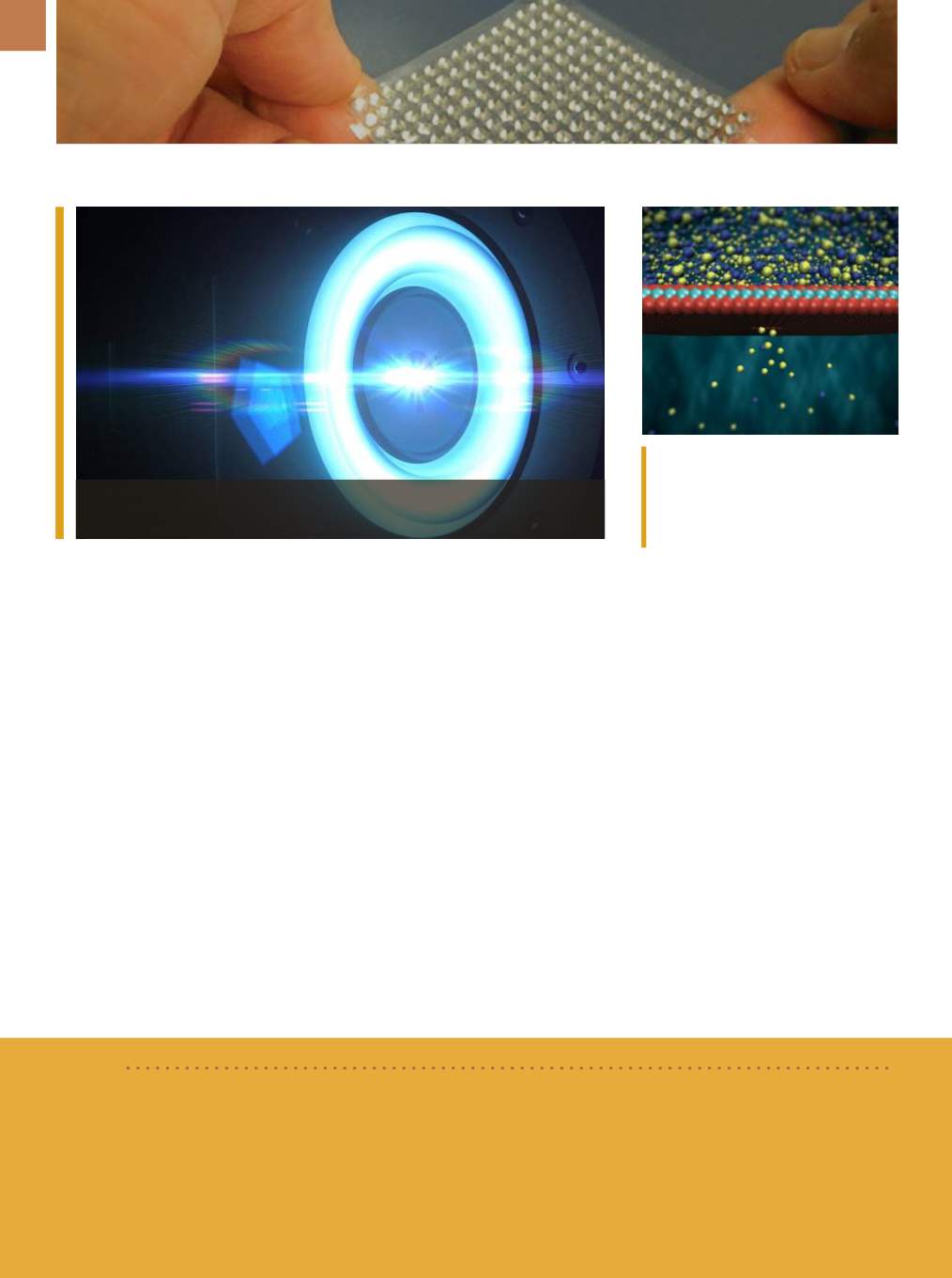

A D V A N C E D M A T E R I A L S & P R O C E S S E S | O C T O B E R 2 0 1 6
1 4
CLEAN, GREEN ELECTRIC
POWER ON THE HORIZON
Brilliant Light Power Inc., Cran-
bury, N.J., continuously generated over
a million watts of power from a new pri-
mary source until the cell vaporized due
to the intense heat. The power released
by the conversion of hydrogen atoms
from water molecules into a lower en-
ergy form called Hydrino or dark matter
is manifest as brilliant-light emitting
plasma. Within the plasma, the light is
essentially all high-energy and exists in
the extreme ultraviolet spectrum.
Using four methodologies, vali-
dators have confirmed over a million
watts of plasma power developed by
BrLP’s SunCell at power gains of over
100 times the power to ignite the Hy-
drino reaction, and at power densities
higher than any previously known en-
ergy source. The safe, nonpolluting
power-producing system catalytically
converts the hydrogen of the H
2
O-based
solid fuel into a non-polluting product,
Hydrino, by allowing the electrons to
fall to smaller radii around the nucle-
us. The energy release is over 200 times
that of burning the equivalent amount
of hydrogen with oxygen. Due to this
extraordinary energy release, H
2
O may
serve as the source of hydrogen fuel to
form Hydrinos and oxygen.
For more
information: Lynn Kline, 609.490.1090
ext. 125,
lkline@brilliantlightpower.com,
brilliantlightpower.com.
NEW FORM OF HYDROPOWER
Proponents of clean energy will
soon have a new source to add to their
existing array of solar, wind, and hy-
dropower: osmotic power. Or more
specifically, energy generated by a nat-
ural phenomenon occurring when fresh
SunCell produces energy by converting the hydrogen element in water-based solid
fuel through a chemical reaction that produces a type of gas plasma energy.
BRIEF
Researchers at the
Langevin Institute, ESPCI Paris,
and the
French National Center for Scientific Research,
recently discovered that a special class of materials called
hyperuniformmaterials
can be both dense and trans-
parent. Their work demonstrates a new way to control light and could lead to novel materials for many light-based
applications including solar photovoltaics. These novel materials can be made of plastic or glass that contains
light-scattering particles spaced in a disordered, but not completely random, pattern.
www.institut-langevin.espci.fr/
home?lang=en,
www.espci.fr/en, www.cnrs.fr/index.php.ENERGY TRENDS
A three-atoms-thick molybdenum
selective membrane. Courtesy of Steven
Duensing/National Center for Supercom-
puting Applications, University of Illinois,
Urbana-Champaign.
water comes into contact with seawater
through a membrane. Researchers at
Ecole Polytechnique Fédérale de Laus-
anne’s Laboratory of Nanoscale Biolo-
gy, Switzerland, developed an osmotic
power generation system that delivers
unprecedented yields. Their innovation
lies in a three-atoms-thick membrane
used to separate the two fluids.
The concept is fairly simple. A semi-
permeable membrane separates two
fluids with different salt concentrations.
Salt ions travel through the membrane
until the salt concentrations in the two
fluids reach equilibrium. If the system
is used with seawater and fresh water,
salt ions in the seawater pass through
the membrane into the fresh water until
both fluids have the same salt concen-
tration. Because an ion is simply an atom
with an electrical charge, the movement
of the salt ions can be harnessed to gen-
erate electricity.
www.epfl.ch.
















